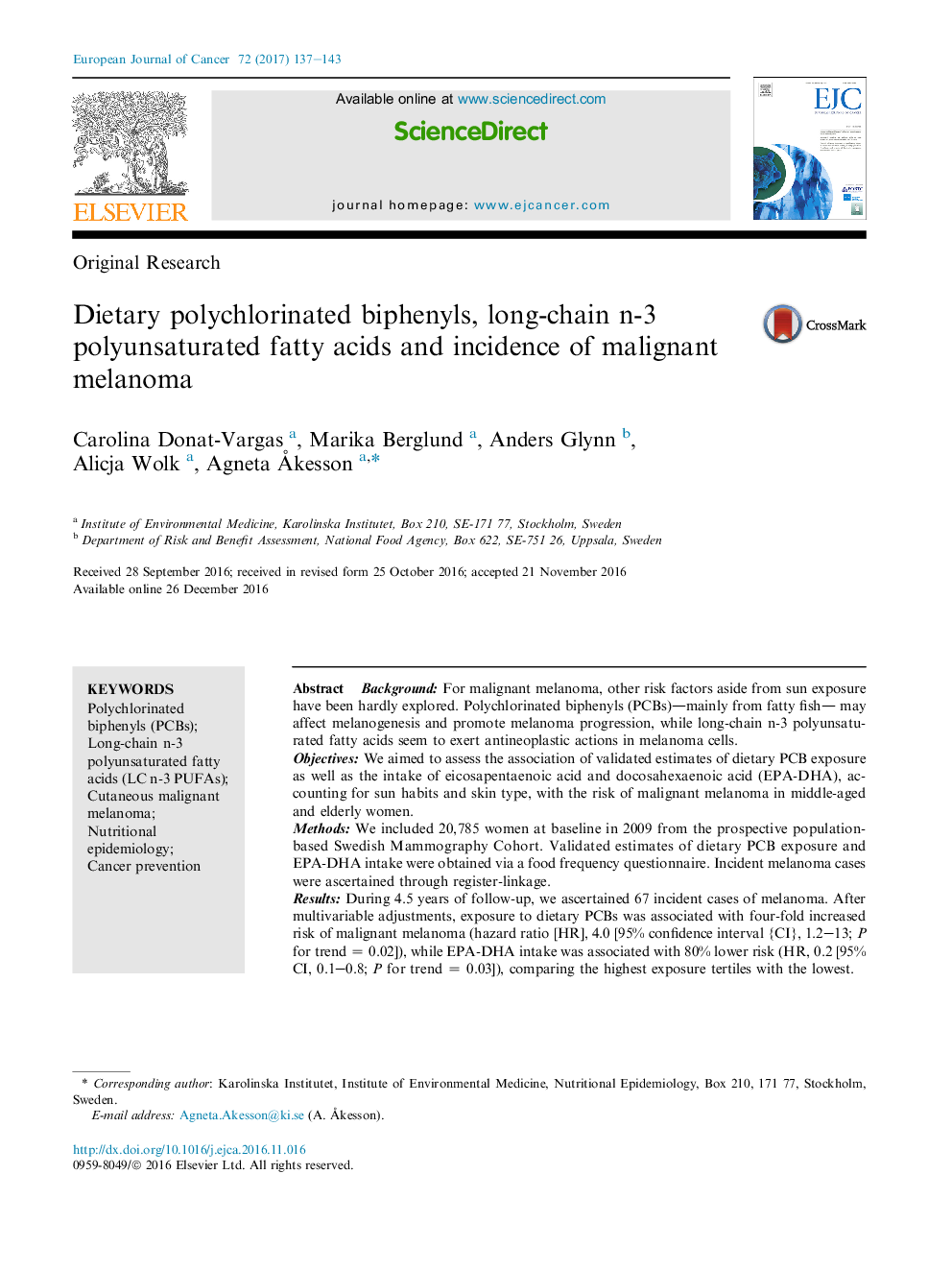| کد مقاله | کد نشریه | سال انتشار | مقاله انگلیسی | نسخه تمام متن |
|---|---|---|---|---|
| 5526318 | 1547060 | 2017 | 7 صفحه PDF | دانلود رایگان |

- Melanoma incidence continues to increase despite public education measures to limit sun exposure.
- This is the first prospective study evaluating dietary PCB exposure and melanoma.
- PCB exposure-mainly from fatty fish-was associated with a four-fold increased risk of melanoma.
- Eicosapentaenoic acid and docosahexaenoic acid intake was associated with 80% lower risk of melanoma.
- Adequately balancing the risk and benefits of fish consumption is a key public health issue.
BackgroundFor malignant melanoma, other risk factors aside from sun exposure have been hardly explored. Polychlorinated biphenyls (PCBs)-mainly from fatty fish- may affect melanogenesis and promote melanoma progression, while long-chain n-3 polyunsaturated fatty acids seem to exert antineoplastic actions in melanoma cells.ObjectivesWe aimed to assess the association of validated estimates of dietary PCB exposure as well as the intake of eicosapentaenoic acid and docosahexaenoic acid (EPA-DHA), accounting for sun habits and skin type, with the risk of malignant melanoma in middle-aged and elderly women.MethodsWe included 20,785 women at baseline in 2009 from the prospective population-based Swedish Mammography Cohort. Validated estimates of dietary PCB exposure and EPA-DHA intake were obtained via a food frequency questionnaire. Incident melanoma cases were ascertained through register-linkage.ResultsDuring 4.5 years of follow-up, we ascertained 67 incident cases of melanoma. After multivariable adjustments, exposure to dietary PCBs was associated with four-fold increased risk of malignant melanoma (hazard ratio [HR], 4.0 [95% confidence interval {CI}, 1.2-13; P for trend = 0.02]), while EPA-DHA intake was associated with 80% lower risk (HR, 0.2 [95% CI, 0.1-0.8; P for trend = 0.03]), comparing the highest exposure tertiles with the lowest.ConclusionWhile we found a direct association between dietary PCB exposure and risk of melanoma, EPA-DHA intake showed to have a substantial protective association. Question of benefits and risk from fish consumption is very relevant and further prospective studies in the general population verifying these findings are warranted.
Journal: European Journal of Cancer - Volume 72, February 2017, Pages 137-143